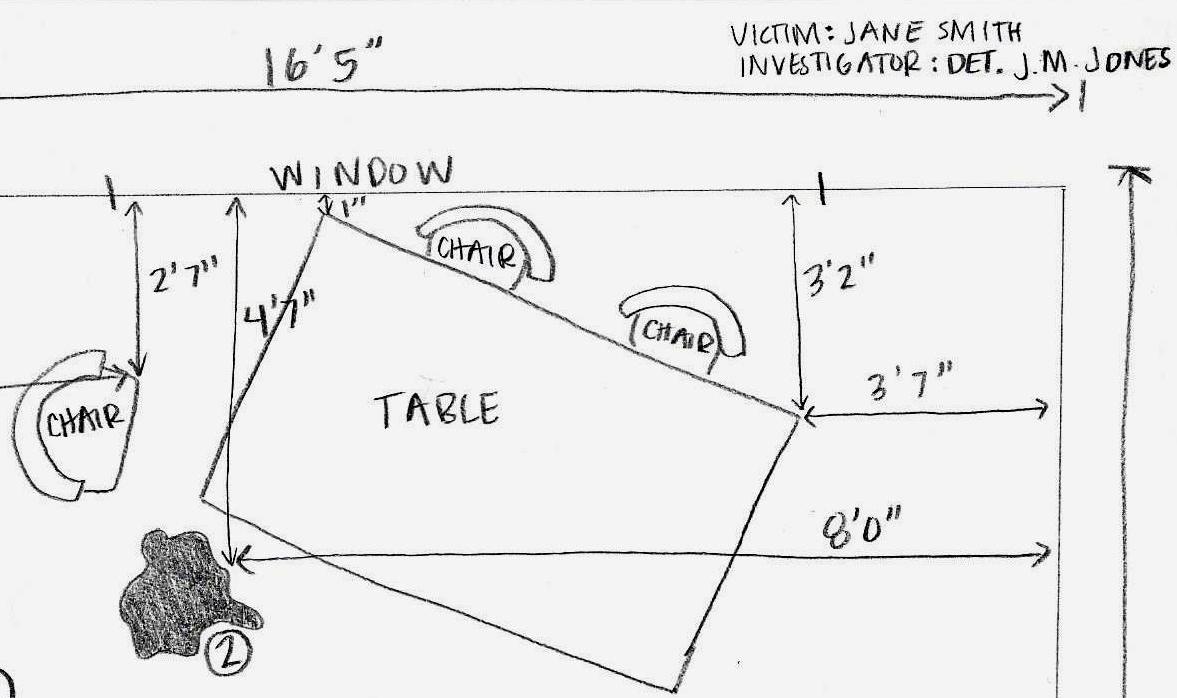READ: Documenting Evidence
Making Sketches
Sketches
Crime scene sketches are another important way that crime scenes are documented. A crime scene sketch helps the investigators to accurately recreate the scene. In order to complete a crime scene sketch all of the dimensions of the scene must be properly measured. The investigator will begin by making a rough draft that shows the layout of the room or outdoor scene, any furniture or outdoor features, and all of the evidence within the scene. The investigator will then measure the distance from each piece of evidence to the perimeter of the scene. They will note the distances on the drawing. Measurements are typically taken from one area of the piece of evidence to at least two sides of the scene in order to properly place the item in the scene.
Each piece of evidence in the drawing will be labeled with the same number on the evidence tag next to it in the scene. The investigator will need to include a legend on the drawing that lists which number goes with each piece of evidence.

The rough draft sketch shows all of the evidence and the general layout, but is generally not drawn to scale. The investigator will make a final drawing later that is drawn to scale. This means that the drawing will exactly represent the placement of the items in the scene. The final drawing can be done by hand, but it is more often done with the help of a computer program. Many final drawings are made with computer drafting programs that are similar to the programs used to make floor plans. This allows the investigator to make a professional looking drawing that can be easily understood in court.
Watch a video about how to make a crime scene sketch.